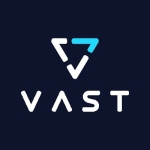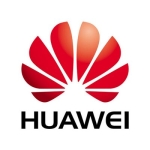What is most valuable?
For me it’s important that my flash system is a part of the NetApp storage system. It’s just an extension of it. My guys can use the same comments, the same tools, the same application integration as they did before. The VDI migration for example, my VDI guy doesn’t change anything. That’s a really good offer for us because then all the tools we can reuse all the integration. It’s just another disk wipe that’s there and that, for me, is the most important reason.
Flash is, for us, a default for databases, VDI, and VMware. We still have some other disks which we bought two years ago, so we migrate step by step. The VDI was the nicest to start with because their benefits were the highest as we got unpredicted workloads for the VDI’s and that is very well handled by the flash.
How has it helped my organization?
First, when you think of flash, everybody says that it’s faster, but that’s not the main reason. Of course it’s all related to it, but for example, with the VDI, we were very pleased with our previous disk system which also aligned with flash rules. But I was not pleased that my guys were spending a lot of time in managing their VDI’s, taking care of it, that they don't do the same thing at the same moment. When they were deploying, it was by 10, for example, not 300 at a time. They did that at night instead of during the day because they were generating a lot of iron on the disk system and the performance were going down.
Honestly, we were very pleased with the average speed in the past. But it’s now consistent. The performance is consistent and that’s much more important than it being faster.
They did a very good job already now with 8.3. If we also compare 8.2. to 8.3, there are a lot of performance improvements already there.
What needs improvement?
It needs to be cheaper, as we want more but can't afford it.
For how long have I used the solution?
We've used it since April or May.
Buyer's Guide
NetApp AFF
September 2025
Learn what your peers think about NetApp AFF. Get advice and tips from experienced pros sharing their opinions. Updated: September 2025.
869,952 professionals have used our research since 2012.
What do I think about the stability of the solution?
In general with NetApp AFF, especially from version 8.1, it’s very stable, and with 8.2 I even can say that it will never die. That’s, for us as a hospital, very important because we’re always on, we don’t have maintenance windows, we don’t have time for big changes as we’re always on the fly, so updating for us is beyond us.
What do I think about the scalability of the solution?
That’s not a problem. It scales enormously well. We have more than six petabytes today. We have a lot of 8000’s in different guides with MetroCluster, and then because we’re already clustered from 2000’s, there’s 7-Mode systems that we now are migrating to the cluster.
How are customer service and support?
We always have tickets that takes longer than you expect, but I don’t see a difference with other companies. Sometimes it works very fast and then all is good and some of the issues take a little bit long for us. And also what I find very important is your critical tickets, are they handled perfectly?
Which solution did I use previously and why did I switch?
We tested another solution, but it didn't integrate well.
How was the initial setup?
We're very knowledgable with NetApp, is the initial setup was very straightforward. If you're anew customer, the whole system comes complete pre-configured, so that's very, very simple. If you buy the pieces separately, then you have to configure it yourself, and if you're not knowledgable with NetApp, it's going to take some time to complete.
What about the implementation team?
We do it in-house. We do it completely by ourselves because we like to do this. Also it’s important because we really want to understand it very well. How the system works in general and by doing the set up by yourselves it gives you already the knowledge of all traffic.
What other advice do I have?
Go with flash. We not have more free time because we can just press a button and deploy three of 500 VDI's at once. We don't have to invest in high-performance disks because we use flash.
Disclosure: My company does not have a business relationship with this vendor other than being a customer.












How has it been going? is there a recommendation to choose between the 3.8TB & 15TB SSD's